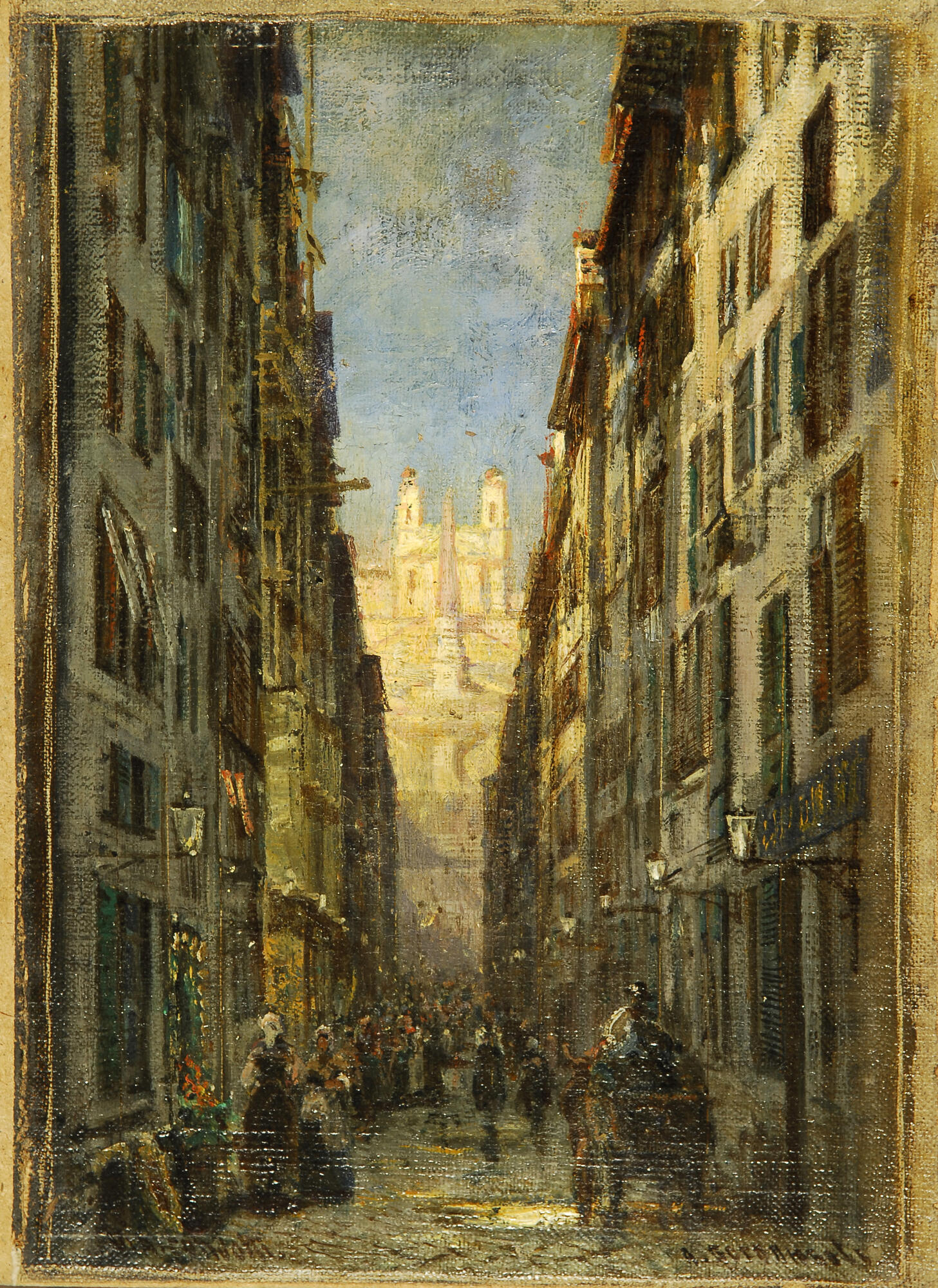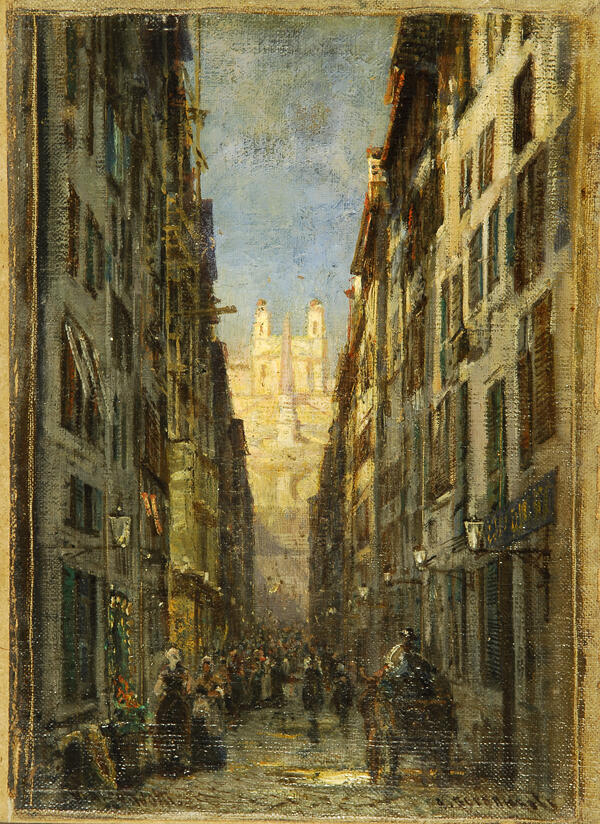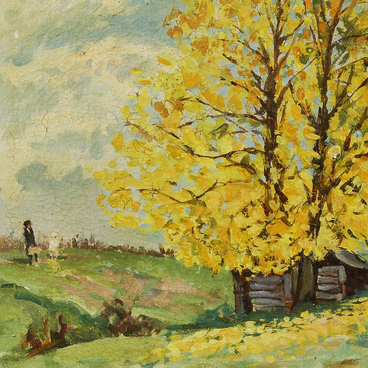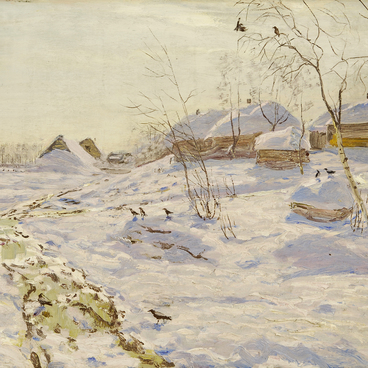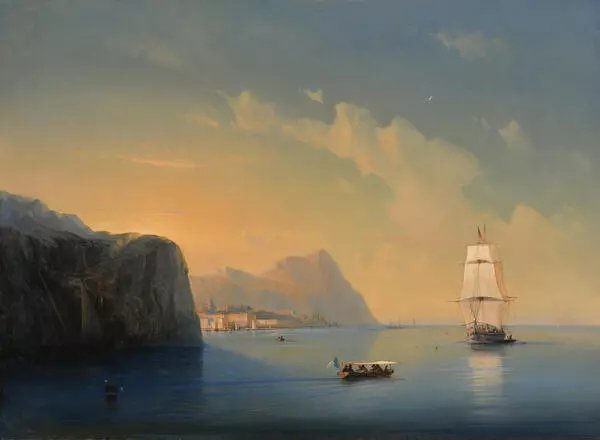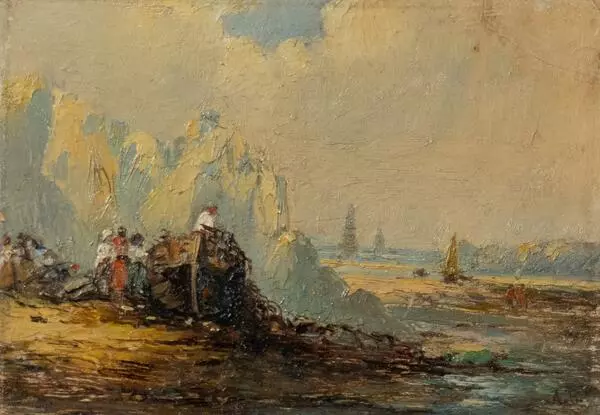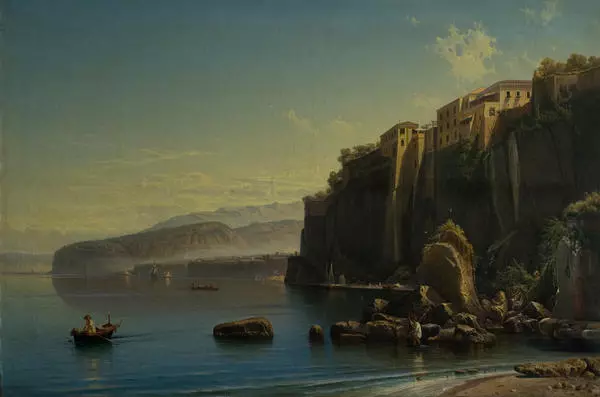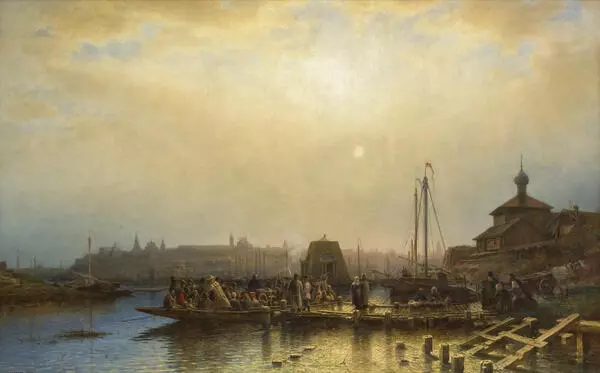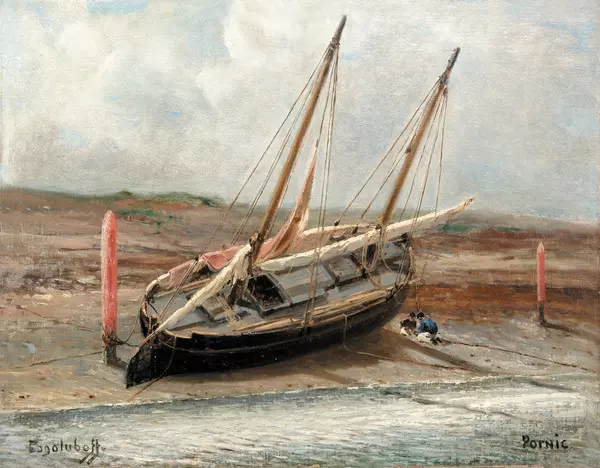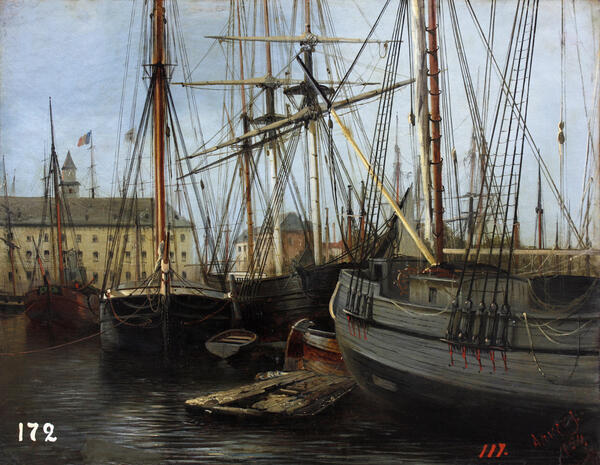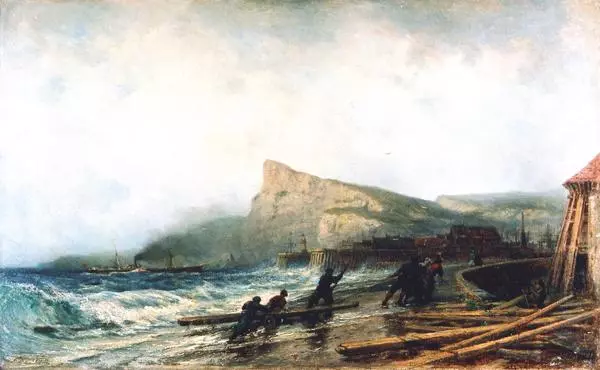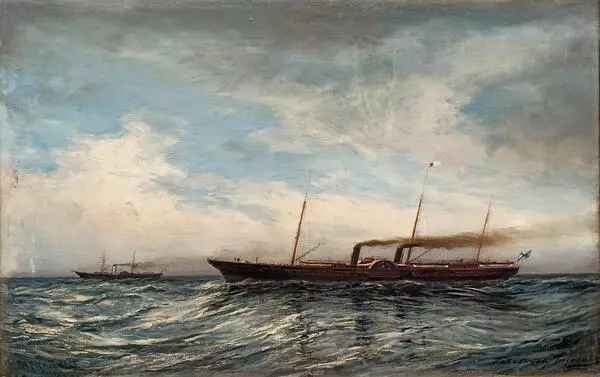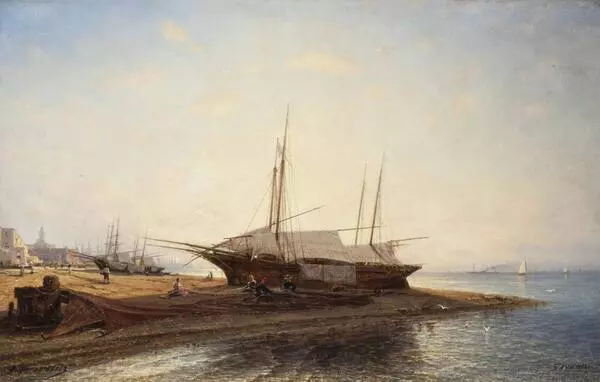Alexey Bogolyubov painted the piece ‘A street in Rome, ” in 1856. The artist portrayed this lively street in Rome leading to Piazza di Spagna. The setting sun illuminates the building tops and the old road. The Trinita dei Monti Church can be seen at the top of a hill overwhelmed by soft light. Deep shadows cover the street in the evening.
The artist has created such a smooth painting that each stroke blends seamlessly with the other and becomes indistinguishable. He painted the walls of the buildings grey using a thin coat: this is a superimposition of the thinnest layers of one translucent paint on top of another to make the color deeper and more picturesque. This method is easily visible and works especially well in the foreground of a painting.
In this piece of art Bogolyubov used light pastose glazing — a method of applying paints in dense, opaque layers. This is how he painted the buildings, which are illuminated by the sun. The artist constructed the composition using linear perspective: small objects give the impression of being farther away from the viewer.
Alexey Bogolyubov painted this landscape during his retirement trip. In 1853 he graduated from the Imperial Academy of Arts with a big gold medal, which was necessary to obtain a scholarship to study in Europe. At the time, that type of award was called a “pension.” The best graduates of the Academy became “pensioners, ” and continued to improve their skills in Italy, France and other countries to personally familiarize themselves with ancient European architecture and original frescoes by great artists.
Thanks to his pension, the artist was able to travel to many countries: Switzerland, Belgium, Italy, France. The biographers of Alexey Bogolyubov”s Radishchev Museum, mentioned that in Italy Bogolyubov consistently moved from city to city and very meticulously sketched architecture with columns, capitals, and cornices. Later he settled in Rome, where he painted many works of art alongside nature. It was there, where he saw paintings by French Realist art schools for the first time. This “immediately transformed me, ” Bogolyubov wrote. “And I began to analyze how these people, who grew up in the school of Ingres, Rousseau, Corot and other new influencers <…> looked at nature.”
Then Alexey Bogolyubov went to France and became acquainted with these outstanding contemporaries. Experts from the Radishchev Museum wrote that peers from Europe appreciated sober realism in a Russian artist: “It wasn”t by coincidence that in Bogolyubov”s studio, old man Corot would often sit and smoke out of his short pipe, and the artist Daubigny who was very fond of Bogolyubov praised his work and often exchanged sketches with him.”
The artist has created such a smooth painting that each stroke blends seamlessly with the other and becomes indistinguishable. He painted the walls of the buildings grey using a thin coat: this is a superimposition of the thinnest layers of one translucent paint on top of another to make the color deeper and more picturesque. This method is easily visible and works especially well in the foreground of a painting.
In this piece of art Bogolyubov used light pastose glazing — a method of applying paints in dense, opaque layers. This is how he painted the buildings, which are illuminated by the sun. The artist constructed the composition using linear perspective: small objects give the impression of being farther away from the viewer.
Alexey Bogolyubov painted this landscape during his retirement trip. In 1853 he graduated from the Imperial Academy of Arts with a big gold medal, which was necessary to obtain a scholarship to study in Europe. At the time, that type of award was called a “pension.” The best graduates of the Academy became “pensioners, ” and continued to improve their skills in Italy, France and other countries to personally familiarize themselves with ancient European architecture and original frescoes by great artists.
Thanks to his pension, the artist was able to travel to many countries: Switzerland, Belgium, Italy, France. The biographers of Alexey Bogolyubov”s Radishchev Museum, mentioned that in Italy Bogolyubov consistently moved from city to city and very meticulously sketched architecture with columns, capitals, and cornices. Later he settled in Rome, where he painted many works of art alongside nature. It was there, where he saw paintings by French Realist art schools for the first time. This “immediately transformed me, ” Bogolyubov wrote. “And I began to analyze how these people, who grew up in the school of Ingres, Rousseau, Corot and other new influencers <…> looked at nature.”
Then Alexey Bogolyubov went to France and became acquainted with these outstanding contemporaries. Experts from the Radishchev Museum wrote that peers from Europe appreciated sober realism in a Russian artist: “It wasn”t by coincidence that in Bogolyubov”s studio, old man Corot would often sit and smoke out of his short pipe, and the artist Daubigny who was very fond of Bogolyubov praised his work and often exchanged sketches with him.”
